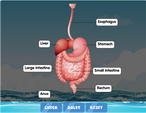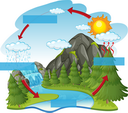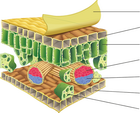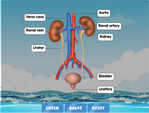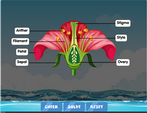The parts of a plant cell diagram quiz
All life on Earth is made of cells – plants are no exception. Plant cells, like animal cells, are very tiny, and you share many familiar organelles, such as the nucleus, cytoplasm, mitochrondia, Golgi apparatus, and endoplasmic reticulum. However, plant cells also have a few different structures that aren’t found in animal cells.
The Intricate World of the Plant Cell: Dive into Interactive Labeling Exercises!
For budding scientists and curious young minds, understanding the intricate details of life at a cellular level is both intriguing and essential. One of the fundamental concepts in elementary science is the study of plant cells. Through labelling plant cell exercises, children get a hands-on experience, allowing them to visualize and internalize the various components of a cell. Interactive exercises that focus on labeling a plant cell ensure that learners grasp the intricacies while having fun.
Why is Labeling a Plant Cell Important?
Understanding the basic structure of a plant cell is the foundation for more advanced botanical and biological studies. When a student engages in plant cell labelling, they're not just memorizing – they're internalizing the roles and functions of each part of the cell.
Visual Learning: Visual aids, especially interactive ones, boost comprehension. Labeling exercises allow children to connect textual information with visual representations.
Hands-On Experience: Interactivity fosters engagement. When kids can drag, drop, or click on parts of the cell to label them, the learning experience becomes more tangible.
Building a Strong Foundation: Before diving into the complex world of cell functions, genetics, or plant biology, a clear understanding of the basic labeled plant cell is crucial.
Delving Deeper with Interactive Plant Cell Labeling
One of the most effective ways to solidify a child's understanding of plant cells is through interactive exercises. Digital platforms have revolutionized the way children learn, making it more interactive, engaging, and efficient.
The Parts of a Plant Cell Diagram Quiz: This engaging quiz is designed to test and reinforce a student's knowledge about the various components of a plant cell. Through a series of interactive questions, learners can assess their understanding and learn from any mistakes.
ESL Games Plus Science Games: Beyond just plant cells, this platform introduces young learners to a vast realm of science topics. Each game and exercise is crafted to be both educational and entertaining, ensuring that learning never feels like a chore.
Set the Path for Future Biologists
Plant cell labeling might seem like a small step, but it's a giant leap in a child's scientific journey. These foundational concepts lay the groundwork for more advanced studies in biology, botany, and genetics. Through labelling plant cell exercises, children are not just learning; they're preparing to become the scientists, botanists, and researchers of tomorrow.
Wrapping Up
Plant cells are intricate, beautiful, and essential to life on Earth. Through interactive exercises focused on labeling a plant cell, students can dive deep into the world of botany from a cellular perspective. By using engaging platforms and interactive quizzes, the intricate world of the plant cell comes alive, setting the stage for a lifelong love of science.
Plant cells are surrounded by a tough outer layer called the cell wall, which keeps plants strong, sturdy and upright even against wind, rain, and trampling animals. Underneath the cell wall is the cell membrane separating the cytoplasm and organelles further inside.
One of the organelles only found in plant cells is the vacuole, a large bubble-like sac that stores nutrients and water for the cell to live. It also keeps the cell firm against pressure.
Another organelle that is unique to plants is the chloroplast. To perform photosynthesis, a plant harvests light energy from the Sun with the help of chlorophyll, a green substance made by the chloroplast. Chloroplasts produce food from water and CO2, and release oxygen as a waste product.
The parts of a plant cell diagram quiz found here can build your knowledge of a plant cell’s different parts and structures, as well as relate each part to their corresponding roles and functions to the plant.

